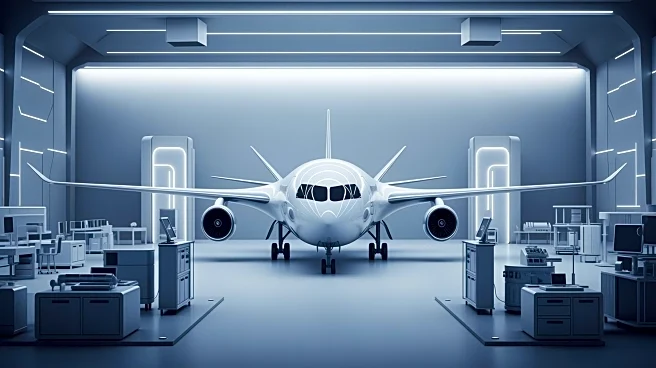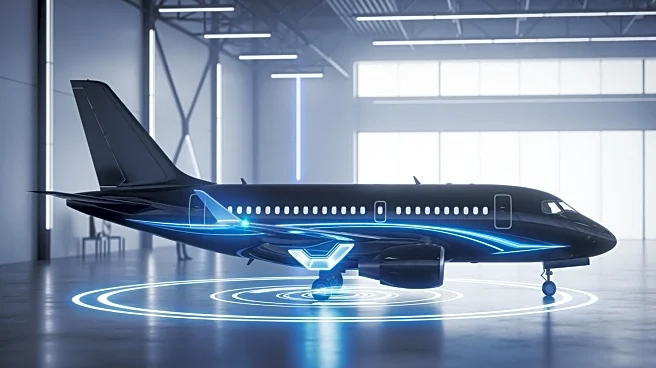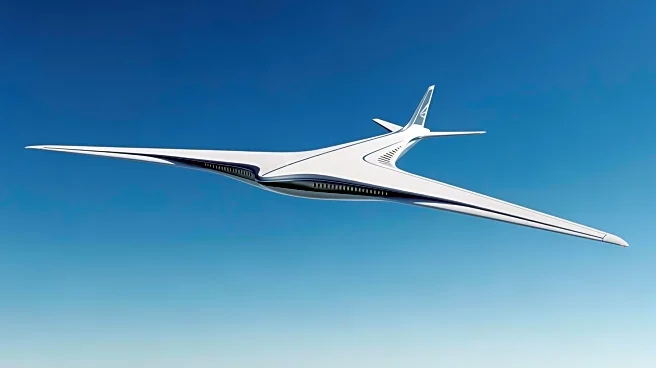What's Happening?
Outbound Aerospace is advancing the concept of blended-wing aircraft, where the fuselage and wings form a single structure to enhance aerodynamic efficiency. The company recently tested a small V-shaped remote-controlled aircraft, codenamed Steve, at
the Pendleton UAS Range in Oregon. This test marks the initial phase of developing a 200 to 250-seat blended-wing airliner, named the Olympic, expected to launch in the 2030s. The blended-wing design, which dates back over a century, has primarily been used by the military. Outbound Aerospace aims to leverage this technology to reduce emissions and improve fuel efficiency in commercial aviation.
Why It's Important?
The development of blended-wing aircraft represents a potential breakthrough in aviation technology, offering significant environmental benefits. By improving aerodynamic efficiency, these aircraft could reduce fuel consumption and emissions, aligning with industry goals for sustainability. The concept also challenges traditional aircraft design, potentially leading to innovations in passenger comfort and cabin layout. However, the transition to blended-wing airliners faces technical and regulatory hurdles, requiring extensive testing and certification processes.
What's Next?
Outbound Aerospace's progress in blended-wing technology will likely attract interest from major airlines and manufacturers seeking sustainable solutions. The company will need to demonstrate the viability and safety of its design through rigorous testing and collaboration with regulatory bodies. As the aviation industry continues to prioritize emissions reduction, blended-wing aircraft could become a key component of future fleets. Stakeholders will be watching closely to assess the impact on operational costs and passenger experience.
Beyond the Headlines
The pursuit of blended-wing aircraft highlights broader trends in aerospace innovation and environmental responsibility. As companies explore new designs and technologies, the industry may see shifts in manufacturing processes and supply chain dynamics. The focus on sustainability could drive advancements in alternative fuels and materials, influencing long-term industry practices. Additionally, the integration of advanced technologies in aircraft design may redefine air travel experiences and expectations.















